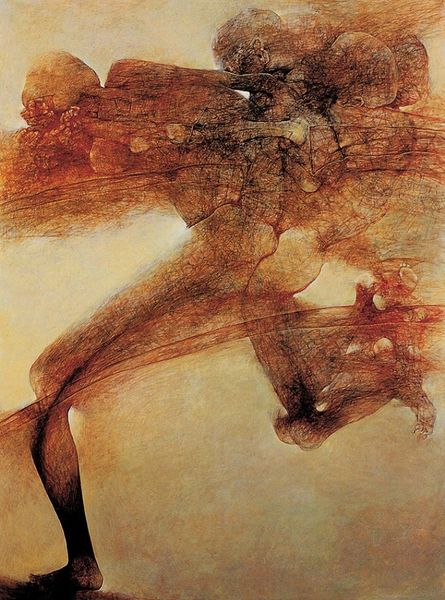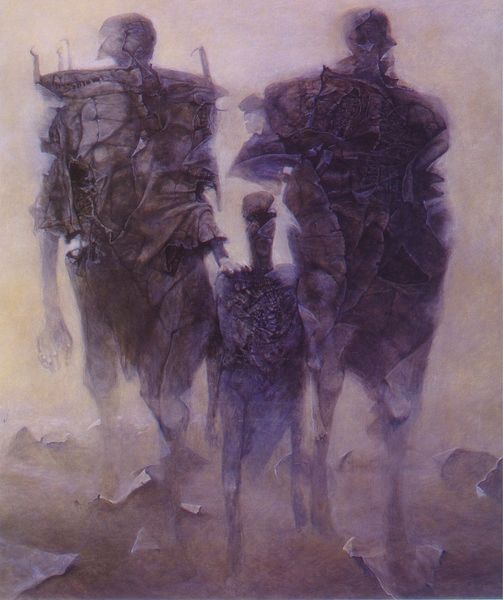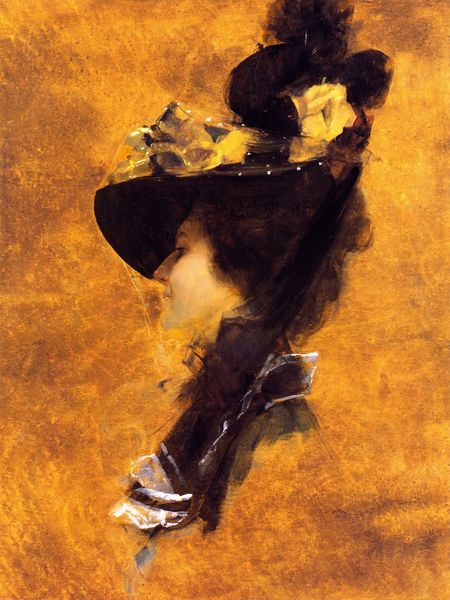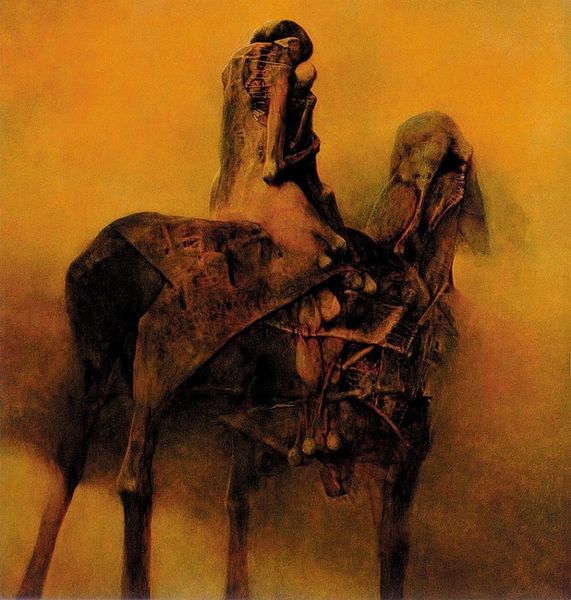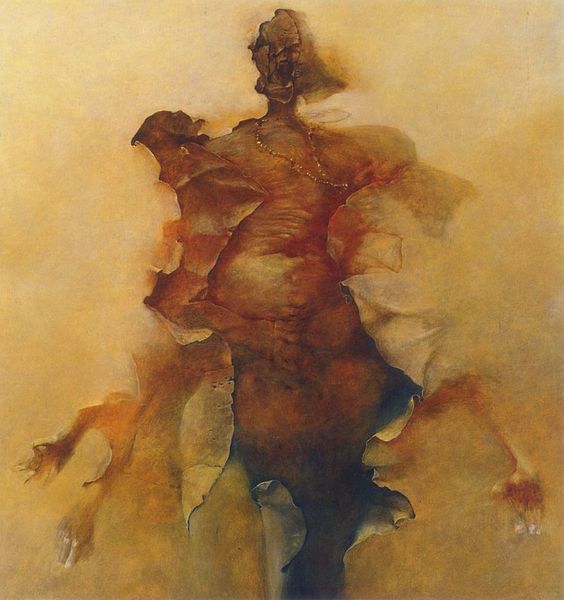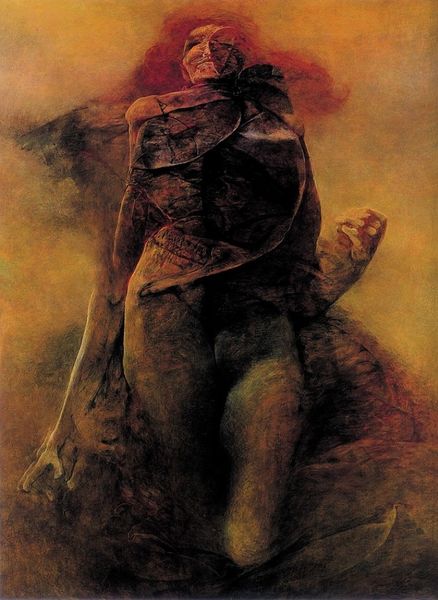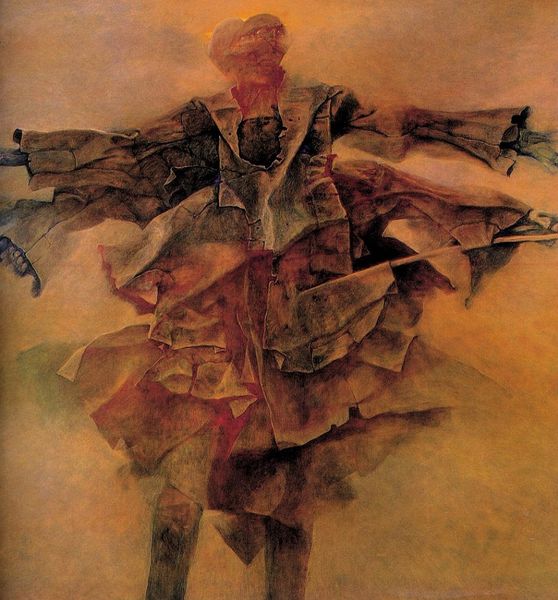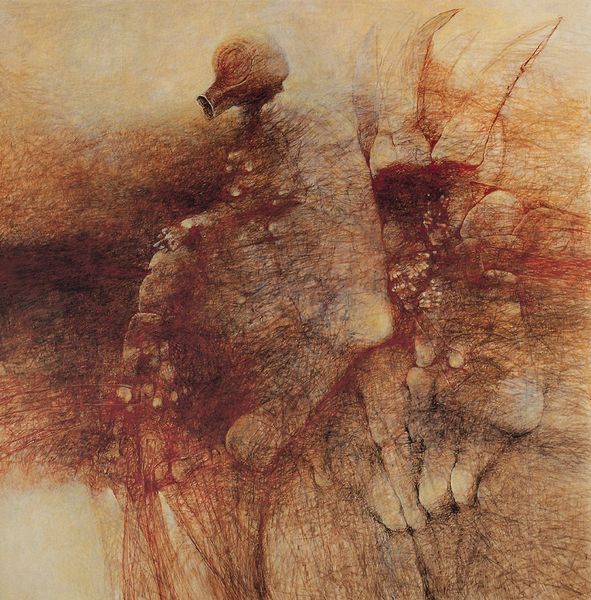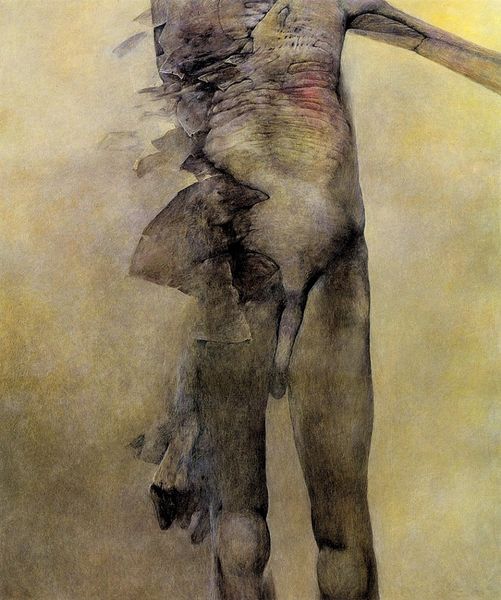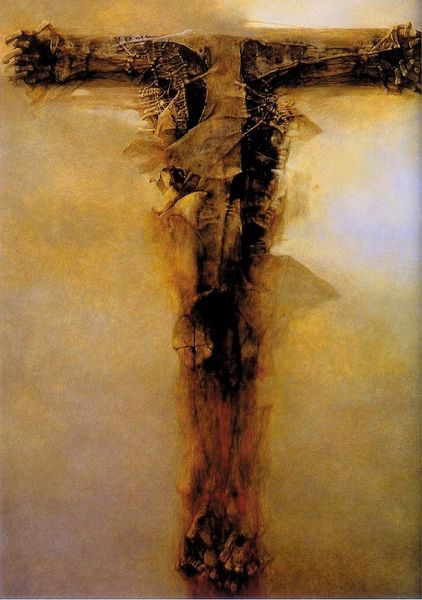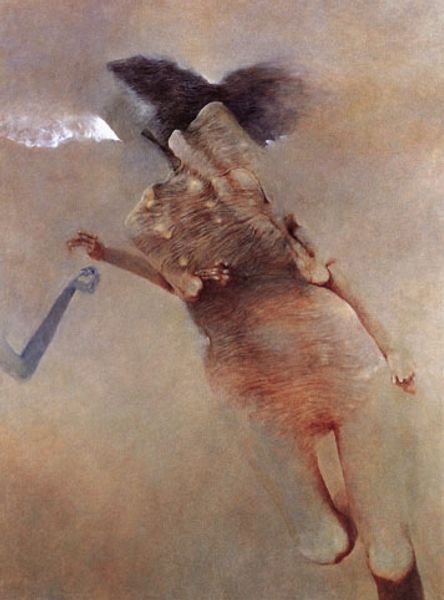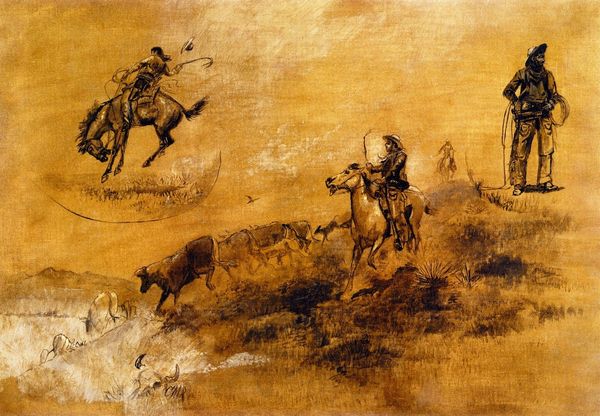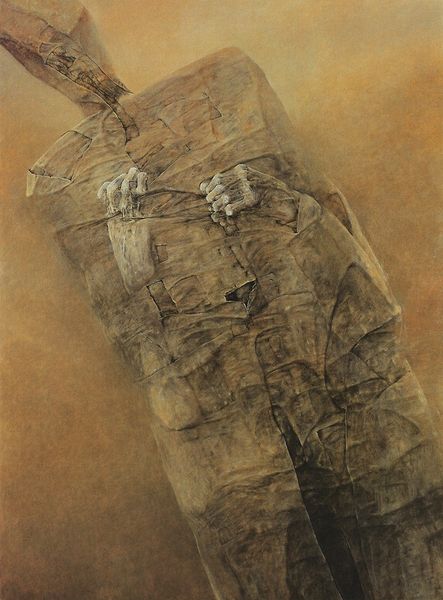
painting, acrylic-paint
#
allegories
#
abstract expressionism
#
abstract painting
#
animal
#
symbol
#
painting
#
acrylic-paint
#
figuration
#
form
#
neo expressionist
#
neo-expressionism
#
matter-painting
#
abstraction
#
surrealism
Copyright: © The Historical Museum in Sanok (Poland) is the exclusive owner of copyrights of Zdzisław Beksiński's works.
Curator: Welcome. The artwork before you is an untitled painting by Zdzislaw Beksinski. Although undated, it is rendered with acrylic paint on canvas. Editor: The initial feeling is haunting. It's difficult to discern definite forms, but the muted ochre palette lends it a ghostly quality. The textured dark masses evoke a sense of decay or petrification, somehow. Curator: Beksinski, particularly within his “fantastic period,” explored such visceral themes consistently. There is no established reading or institutional narrative for this work, though. What meaning do you pull from the suggestive animal forms? Editor: I see echoes of a ruined monument on the left and a tormented quadruped on the right. Symbolically, it whispers of entropy, perhaps the inevitable crumbling of established structures and the suffering it inflicts, given how the beast seems shackled or armored. Curator: It is interesting how his artistic output resonated deeply with audiences across a landscape dramatically reshaped by socioeconomic forces after World War Two and amidst political uncertainty. Critics placed him in the Neo-expressionist movement, so a sense of existential angst comes as no surprise. Editor: Absolutely. He channels raw emotion into archetypal imagery that lingers with you, the echoes of some ancient myth or forgotten ritual bubbling up from our shared unconsciousness. Is there a social critique embedded here? A power dynamic visualized in that strange skeletal structure? Curator: Without a documented authorial intention or a detailed provenance, interpretation becomes more subjective. However, Beksinski's position outside the mainstream art world during the Polish communist era speaks to an artist forging his own path, defying conventional narratives through intensely personal expression. Editor: Indeed. And those fragmented forms mirror the shattering of certainty, a constant re-evaluation. A potent reminder of how symbols persist, morphing through time, to reflect humanity's deepest fears and fascinations. Curator: Ultimately, it makes us contemplate our relationship with societal shifts. How do institutions change and when do individuals feel that loss? It allows us a moment of pause for all its implied history. Editor: For all its darkness, it makes the symbols within ourselves, whether fear or uncertainty, feel valid in their evocation, don't you think?
Comments
No comments
Be the first to comment and join the conversation on the ultimate creative platform.
